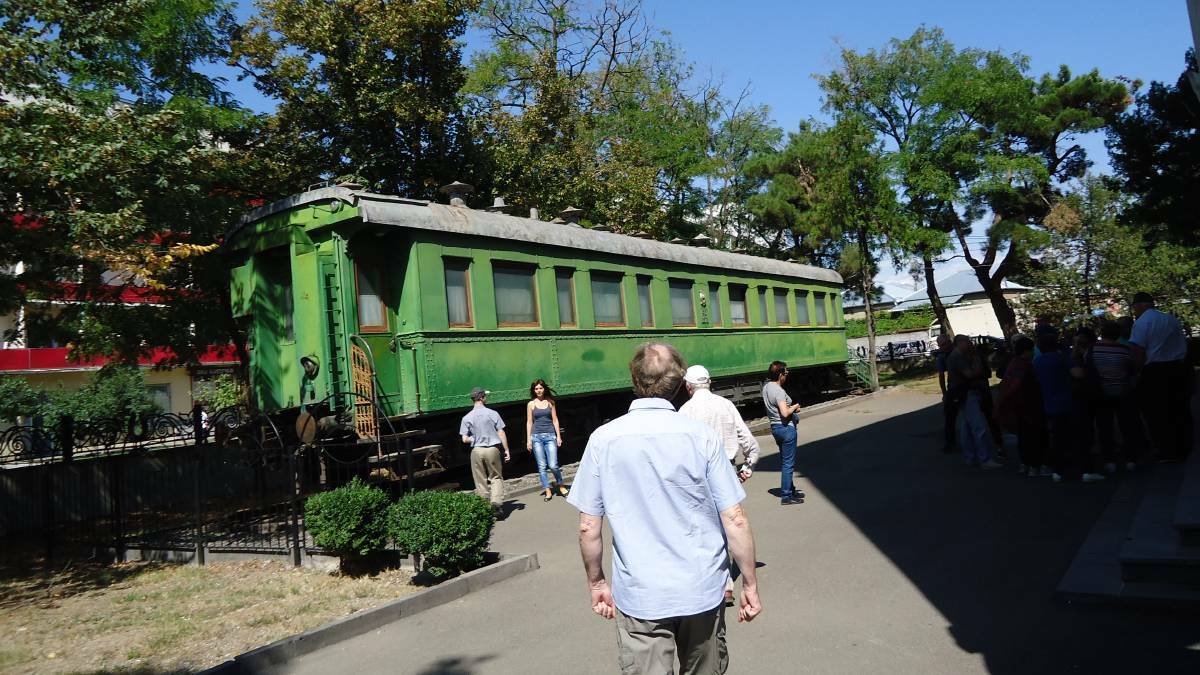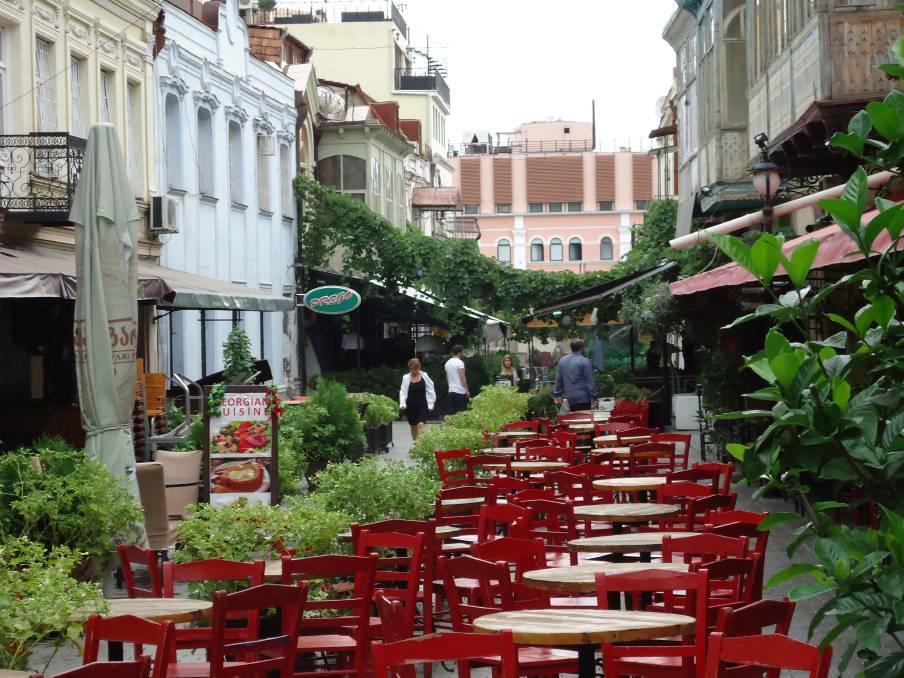Morbid curiosity about the murderous Soviet dictator, Stalin, led me to a bizarre museum in Georgia.
Create a free account to read this article
$0/
(min cost $0)
or signup to continue reading
The museum was designed by Stalin’s deputy, the psychopathic and bloodthirsty architect, Lavrentiy Beria.
Opened in 1957, four years after Stalin’s death, it was closed in 1989, after the fall of the old Soviet Union, but has since reopened and is apparently a must-see attraction on any visit to Georgia.
The museum was built around the birthplace of Stalin, a ramshackle, two-bedroom cottage that has been carefully preserved.
Joseph Vissarionovich Stalin, born in Gori in 1878, led the former Soviet Union from the mid-1920s and was responsible for the death of more than six million people.
The museum’s basement has a sad, pathetic exhibition of old clothes and empty suitcases, a nod to the gulags formed under Stalin and in which millions of Soviets died.
The rest of the museum glorifies the dictator, displaying his last packet of cigarettes, his death mask (in a hushed and darkened room), his winter coat worn at the Yalta Conference and a series of paintings depicting Stalin as an heroic revolutionary.
But the museum’s most bizarre exhibition is outside, in the square.
There sits Stalin’s personal railway carriage, a green Pullman car once used by Tsar Nicholas and remodelled to transport Stalin across the Soviet Union during World War II and beyond.

Stalin feared assassination and never flew, preferring train travel.
You can walk inside the carriage and inspect the kitchen, with a stove for cooking, bathroom with porcelain basin, shower and toilet and several bedrooms with bunk beds, complete with original linen, clock and dressing table.
On the day I visited, it seemed as if our guide wanted to depart Gori as soon as possible, allowing just 40 minutes to tour the museum.
It is hard to imagine how Georgians reconcile their fierce independence from their predatory neighbour, Russia, with the fact that Stalin was one of their own.
Bomb sites remain across this scenic country from the 2008 Russo-Georgian War, yet many Georgians remain proud of their revolutionary son Stalin (who apparently never liked to be reminded of his birthplace when living and ruling from Moscow).
Yet, the central feature of Gori remains the museum, where you can buy from its shop coasters with photos of Stalin, mini busts of Stalin and postcards of the reviled dictator.
There are other points of interest in and around Gori, in particular Uplistsikhe, an ancient fortress carved into rock about a 20-minute drive from Gori.
[Tibilisi] is the capital of the Caucasus, the Tsar’s wild, mountainous viceroyalty between the Black and Caspian seas, a cauldron of fierce and proud people. Historian Simon Sebag Montefiore
Probably the main attraction in Georgia is its capital, Tbilisi, which lies on the banks of the Kura River.
Tourism here is under-developed and there is much to explore for the tourist seeking something different.
Start at the historic Yerevan, or Freedom Square, known as Beria Square and Lenin Square during the Soviet era and the scene of Stalin’s infamous bank heist in 1907.
Then, 40 people were killed when a bank stagecoach was ambushed and from which Stalin escaped with 340,000 rubles.
The square, a good place to get one’s bearings, is guarded by a gold statue of St George and serves as a monument to the country’s independence.
The city is overlooked by the Holy Trinity Cathedral, a Georgian Orthodox church built over 10 years from 1995 and designed to reflect the country’s national and spiritual revival after years living under Soviet authority (Georgia gained its independence from the former Soviet Unon in 1991).
Look on the other side of the city and you will see Mtatsminda Amusement Park, perched 770 metres above Tbilisi and the city’s highest point.

Take the funicular and wander around the 100 hectares of rides, cafes, a ferris wheel and picnic places.
Long before Stalin and Soviet politics, the Great Silk Road connecting China with the Mediterranean traversed Georgia and Tbilisi.
It brought Byzantine and oriental culture to the country, and this is reflected in Georgia’s cuisine.
Cafes and restaurants have sprung up along the narrow streets of Tbilisi’s Old Town.
Tarragon, flat parsley, walnuts and garlic are commonly used in Persian-inspired dishes such as Khinkali,Georgian dumplings and Lobio, or bean soup.
Georgia is famous for its wines (viticulture dates back 8000 years in the region).
Have dinner in one of the cafes and after, visit the Rezo Gabriadze Puppet Theatre.
This tiny space with just 80 seats has a miniature stage where puppets and marionettes bring to life Georgia’s history in satirical plays.
Georgia might not be on every tourist’s radar, however a visit to this rich and proud country will stay with you.




